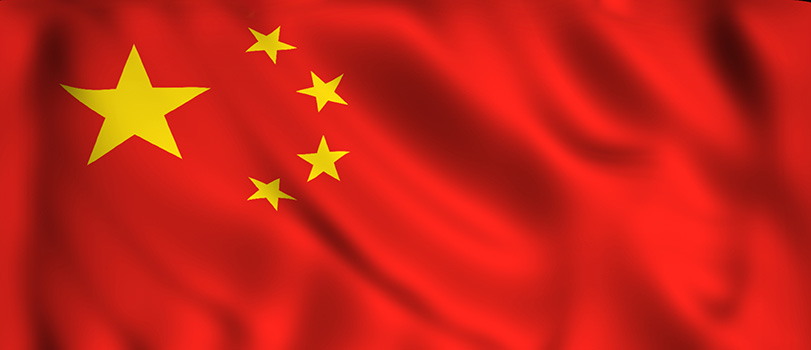©2025 Keller and Heckman, LLP
China Approves New Food-Contact Materials

On August 15, 2020, China National Health Commission (NHC) published approvals for three new food-contact materials, eight new resins, and expanded use for five food-contact materials. The substances and specifications are listed below.
New Food-Contact Additives
- Microfibrillated cellulose pulp (CAS no. 65996-61-4) for use in paper and paperboard at a maximum use level of 5% (dry weight of fiber).
- 2-Butenedioic acid (2E)-, dibutyl ester, homopolymer for use in coatings and coating layers at a maximum use level of 2% and maximum use temperature of 121oC. Coatings and coating layers containing this substance may not contact infant food and breast milk.
- 2-Propeniuc acid, ethyl ester, polymer with 2-methyl-2-propenamide (CAS no. 25085-36-3) for use in plastic (ABS) at a maximum use level of 1% and specific migration limits (SMLs) of 6 mg/kg for acrylic acid and non-detect (ND) for methacrylamide (non-detect limit (DL) equals 0.01 mg/kg).
Food-Contact Materials and Articles with Expanded Use
- Calcium stearate (CAS no. 1592-23-0) for use in plastic (PEEK) at a maximum use level of 0.03%.
- 2,5-Furandione, dihydro-, mono-C15-20-alkenyl derives (CAS no. 68784-12-3) for use in plastic (PE, PP) at a maximum use level of 0.48% and a maximum use temperature of 100o C. Plastics containing this substance may not contact infant food and breast milk.
- Polyethylene (CAS no. 9002-88-4) for use in rubber at a maximum use level of 2% and only for rubber materials and articles for repeated use.
- C.I. Solvent Violet 36; 1,8-bis[(4-Methylphenyl) amino]-9,10-anthrace nedione (CAS no. 82-16-6) for use in plastic (AS) at a maximum use level of 0.0005% and a maximum use temperature of 100o C. This substance must comply with the purity requirements of colorants in Appendix A of GB 9685-2016.
- Octadecyl 3-(3,5-di-tert-butyl-4-hydroxyphenyl) propionate (CAS no. 2082-79-3) for use in plastic (PB-1) at a maximum use level of 0.045% and an SML of 6 mg/kg.
New Resins
- Fatty acid, C18-unsaturated, dimers, polymers with caprolactam and hexamethylene diamine (CAS no. 2068097-08-3) for use in plastics with the following SMLs: 15 mg/kg for caprolactam, 2.4 mg/kg for hexamethylene diamine, and 0.05 mg/kg for the sum of un-hydrogenated C18-unsaturated fatty acid dimer and hydrogenated dimerized C18-unsaturated fatty acid. Plastics made from this substance may not contact infant food and breast milk. In addition, this substance must be used and stored at room temperature (Hot filling or pasteurization when T≤70°C, t≤2h or T≤100°C, t≤15min).
- Styrene block polymers with 2-methyl-1,3-butadiene and 1,3-butadiene, hydrogenated (CAS no. 132778-07-5) for use in plastics with an SML of non-detect (DL=0.01 mg/kg) for 2-methyl-1,3-butadiene and 1,3-butadiene. The maximum permitted residual content (QM) is 1 mg/kg for 2-methyl-1,3-butadiene and 1,3-butadiene, and 0.5% for styrene.
- Phenol, 4,4’-(1-methylethylidene) bis-, polymer with (chloromethyl) oxirane, benzoate (CAS no. 52907-82-1) for use in coatings and coating layers at a maximum use level of 19.7% (as coating formula). The SML for bisphenol A is 0.06 mg/kg and the QM is 1 mg/kg for epichlorohydrin. Coatings and coating layers with this substance may not contact infant food and breast milk.
- Polymer of 1,4-bis (hydroxymethyl) cyclohexane, 2-methylpropane-1,3-diol, tricyclo (5.2.1.02.7) decan-4,8-dimethanol, benzene-1,4-dicarboxylic acid, benzene-1,3-dicarboxylic acid, cis-butenedioic acid, 5-isocyanato-1-isocyanatomethyl-1,3,3-trimethyl cyclohexane for use in coatings and coating layers at a maximum use level of 30% (as coating formula). The SMLs are 5 mg/kg for 2-methylpropane-1,3-diol, 0.05 mg/kg for tricyclo (5.2.1.02.7) decan-4,8-dimethanol, 7.5 mg/kg for benzene-1,4-dicarboxylic acid, 5 mg/kg for benzene-1,3-dicarboxylic acid, and 30 mg/kg for cis-butenedioic acid. The QM is 1 mg/kg for isocryanate. Coatings and coating layers with this substance may not contact infant food and breast milk.
- Polymer of butanediol-1,4, ethylene glycol, propylene glycol-1,2, trimethylolpropane, dimethyl terephthalate, isophthalic acid and sebacic acid for use in coatings and coating layers at a maximum use level of 30% (as coating formula). The SMLs are 5 mg/kg for butanediol-1,4, 30 mg/kg for ethylene glycol, 6 mg/kg for trimethylolpropane, and 5 mg/kg for isophthalic acid. Coatings and coating layers with this substance may not contact infant food and breast milk.
- 1,3-Benzenedicarboxylic acid, polymer with 1,4-benzenedicarboxylic acid and 1,2-ethanediol (CAS no. 24938-04-3) for use in coatings and coating layers at a maximum use level of 20% (as coating formula) and a maximum use temperature of 130o C. The SMLs are 5 mg/kg for 1,3-benzenedicarboxylic acid, 7.5 mg/kg for 1,4-benzenedicarboxylic acid, and 30 mg/kg for ethanediol. Coatings and coating layers with this substance may not contact infant food and breast milk.
- 2-Propenoic acid, 2-methyl-, polymer with butyl 2-methyl-2-propenoate, 2-(chloromethyl) oxirane, ethenylbenzene, ethyl 2-propenoate, 4,4’-(1-methylethylidene) bis[phenol] and 2-propenoic acid, reaction products with 2-(dimethylamino) ethanol for use in coatings and coating layers at a maximum use level of 85% (as coating formula) and a maximum use temperature of 130o C. The SMLs are 6 mg/kg for methacrylate, ND for epichlorohydrin (DL-0.01 mg/kg), 6 mg/kg for acrylic acid, 0.6 mg/kg for bisphenol A, and 18 mg/kg for 2-(dimethylamino) ethanol. The QM is 1 mg/kg for epichlorohydrin. Coatings and coating layers with this substance may not contact infant food and breast milk.
- 1,3-Benzenedicarboxylic acid, polymer with 1,4-benzenedicarboxylic acid, 1,4-butanediol, 1,8-octanedicarboxylic acid and 1,2-ethanediol (CAS no. 61039-00-7) for use in coatings and coating layers at a maximum use level of 50% (as coating formula) and a maximum use temperature of 130o C. The SMLs are 5 mg/kg for 1,3-Benzenedicarboxylic acid, 7.5 mg/kg for 1,4-benzenedicarboxylic acid, 5 mg/kg for 1,4-butanediol, and 30 mg/kg for 1,2-ethanediol. Coatings and coating layers with this substance may not contact infant food and breast milk.